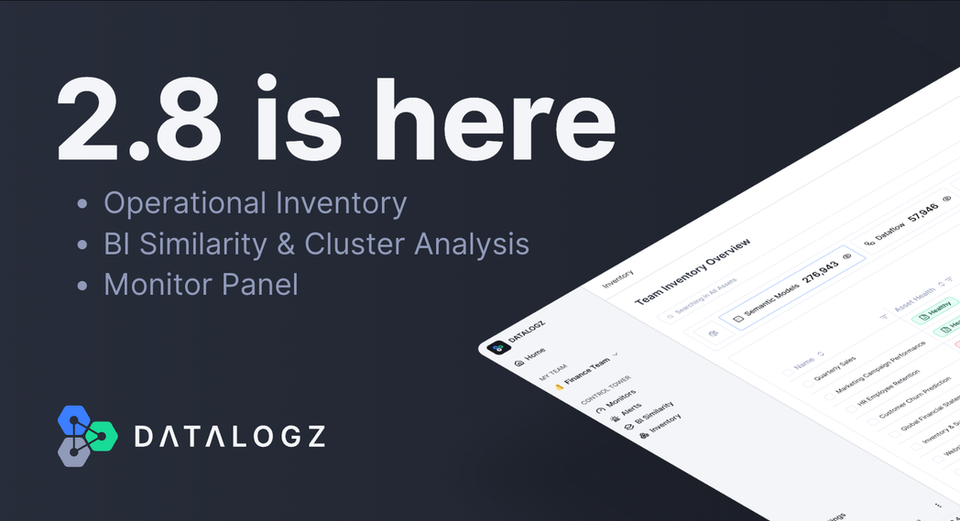How to Enable Proactive Maintenance and Reduce BI Downtime?
Proactive maintenance is a critical strategy for minimizing BI downtime and ensuring that BI systems are running smoothly.

In today's data-driven world, business intelligence (BI) systems are the backbone of many organizations. They help companies to make informed decisions, improve operational efficiency, and gain a competitive advantage. However, BI systems can also experience downtime, which can cause significant disruptions to business operations. Downtime can occur due to various reasons, such as hardware failure, software bugs, or data errors. It can lead to lost productivity, decreased revenue, and damage to a company's reputation. Therefore, it is essential to have proactive maintenance strategies in place to minimize BI downtime and keep systems running smoothly.
Proactive Maintenance
Proactive maintenance is a strategy that focuses on preventing system failures rather than reacting to them after they occur. It involves identifying potential issues before they become critical and taking corrective actions to address them. Proactive maintenance can help to reduce downtime by improving system reliability, performance, and availability. According to a study by the Aberdeen Group, companies that implement proactive maintenance strategies experience 29% less downtime than those that use reactive maintenance approaches.
To enable proactive maintenance for BI systems, companies need to adopt best practices such as regular system backups, security updates, and performance tuning. They should also conduct regular health checks to identify potential issues and take preventive measures. This includes monitoring system resources such as CPU usage, memory, and disk space, and addressing any capacity or performance bottlenecks before they cause downtime.
Predictive Analytics
Another critical component of proactive maintenance for BI systems is predictive analytics. Predictive analytics involves using data, statistical algorithms, and machine learning techniques to identify patterns and trends that can predict future events. In the case of BI systems, predictive analytics can help to identify potential downtime events and take preventive measures. This includes identifying system failures, network disruptions, and data errors that can cause downtime and taking corrective actions to prevent them.
According to a report by Gartner, by 2022, 40% of all large enterprises will use analytics and artificial intelligence to enable proactive monitoring of their IT systems. This indicates the growing importance of predictive analytics in enabling proactive maintenance for BI systems.
Monitoring and Alerting
Monitoring and alerting tools are critical components of proactive maintenance for BI systems. These tools enable companies to monitor their systems in real-time and detect potential issues before they cause downtime. Monitoring tools can track system performance, resource usage, and data quality. Alerting tools can trigger notifications and alerts when potential issues are detected, enabling IT teams to take corrective actions before downtime occurs.
There are many monitoring and alerting tools available in the market, such as Nagios, Zabbix, and PRTG. These tools can help to ensure that BI systems are running smoothly, and any potential issues are addressed before they cause downtime.
Employee Training
Employee training and communication are essential factors in enabling proactive maintenance for BI systems. Employees need to be trained on best practices for system maintenance, including regular backups, security updates, and performance tuning. They should also be aware of potential downtime events and how to identify and report them.
Effective communication between IT teams and other departments is also critical. It enables IT teams to understand the needs of other departments and proactively address potential issues. It also helps to ensure that all employees are aware of system maintenance schedules and any potential downtime events.
Continuous Improvement
Finally, to enable effective proactive maintenance for BI systems, companies need to adopt a continuous improvement approach. This involves ongoing monitoring, analysis, and improvement of system maintenance processes. It includes regular reviews of system logs, performance metrics, and other data to identify areas for improvement. Companies should also conduct regular training and communication sessions to ensure that all employees are aware of the latest best practices and procedures.
In conclusion, proactive maintenance is a critical strategy for minimizing BI downtime and ensuring that BI systems are running smoothly. By adopting best practices such as regular system backups, security updates, and performance tuning, companies can improve system reliability, performance, and availability. Predictive analytics can help to identify potential downtime events and take preventive measures, while monitoring and alerting tools can detect potential issues before they cause downtime. Employee training and communication are also essential factors in enabling proactive maintenance, and continuous improvement ensures ongoing monitoring, analysis, and improvement of system maintenance processes.
Key takeaways:
- BI downtime can have a significant impact on an organization, resulting in lost productivity, decreased revenue, and reduced customer satisfaction.
- Proactive maintenance strategies can help to prevent system failures, improve system performance, and minimize BI downtime.
- Predictive analytics is a powerful tool for identifying potential downtime events and taking preventive measures.
- Monitoring and alerting tools can help to detect potential issues before they cause downtime.
- Employee training and communication are essential factors in ensuring proactive maintenance and minimizing BI downtime.
- Continuous improvement is critical for ongoing monitoring, analysis, and improvement of system maintenance processes.



